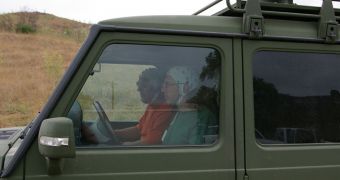Humans are tricky drivers, that's why a team at Sandia National Laboratories outside Albuquerque, NM, created by the Pentagon and a major auto maker is going to develop the smart cars of the future, primarily with military applications, for transporting troops and equipment. The next stage is to test the system with the help of really bored drivers.
"It will involve a convoy of drivers wearing brainwave-detecting caps, proceeding slowly around an abandoned artillery range in Europe-one with monotonous terrain-and waiting for boredom to set in," said senior researcher Kevin Dixon.
Smart cars could shut off your cell phone if they detect traffic problems and you do not need your attention to be distracted. The smarter car would also ask you questions aimed to increase your alertness, if the car "believes" you are losing attention. "It's a matter of physics and physiology," Dixon said.
The brainwaves of drivers recorded by electroencephalographs (EEGs) are added to the data delivered from the cars' computers and the car decides if the driver has got too much.
"If the driver does seem to be struggling with a difficult situation, it might take over the cell phone and delay incoming call notification. Likewise, the GPS might switch from giving visual to auditory directions if the system decides that the driver must be visually tapped out. For dire situations, the car makers might borrow Air Force technology, which uses recordings of women's voice to warn pilots or has the control stick shake if a stall is imminent," Dixon said.
Dixon's team will spend several years on developing the smart car that can make the difference in dangerous situations. "Studies show that nearly 90 % of driving is considered distracted, meaning that the driver is not concentrating on driving. We don't want to identify those situations, since the driver would just turn off the device because of its constant alerts, but we do want to identify those rare situations where a distracted driver is heading into a dangerous situation." said Dixon.
"The Pentagon is very interested in the subject of bored, distracted drivers. In convoy operations, you are driving slowly through dust, staring at the rear of the truck in front of you. If you are not fully alert you could hit the truck in front or drive off the road." he added.
As the EEG caps require a 45-minute process to be put on during the test, civilian drivers won't be tempted to use it. "But other inputs could be used, such as a pulse detector inside the steering wheel. But don't expect to see any such options in new cars for at least five years," said Dixon.

 14 DAY TRIAL //
14 DAY TRIAL //